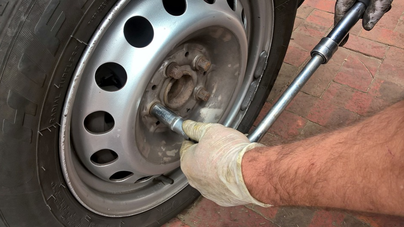Morris Tires: Your Partner for Specialist GMC Tires Service
Morris Tires: Your Partner for Specialist GMC Tires Service
Blog Article
Tire Service: The Effect of Climate Conditions
When it comes to making sure ideal efficiency and safety when driving, understanding the effect of weather on tire service is vital. From scorching warmth to icy roads, each weather condition aspect can substantially influence tire performance and total driving experience. By delving right into the effects of differing climate condition on tires, motorists can get important insights that might improve their vehicle's efficiency and longevity. In this discussion, we will explore the detailed partnership in between weather and tire service, shedding light on the relevance of weather-specific tire maintenance practices and considerations.
Warmth and Tire Efficiency
When revealed to high temperature levels, tires experience changes in performance that can significantly influence vehicle safety and security and handling. The warmth produced from prolonged driving or hot weather conditions causes the tire rubber to soften, bring about minimized tread life and boosted wear. As the rubber ends up being softer, the tire's grasp when driving lessens, affecting stopping distances and overall traction. In extreme instances, too much warmth can also trigger tire blowouts, posing a severe safety and security danger to the vehicle and its occupants.

Winter Results
Winter conditions can have a considerable effect on tire efficiency and safety. As temperatures drop, tire rubber can set, causing lowered traction on icy or snow-covered roadways. In cold climate, tires might also lose air pressure more quickly, which can affect managing and fuel efficiency. Furthermore, cool temperature levels can create tire sidewalls to stiffen, enhancing the danger of damage from fractures or other roadway dangers.
To minimize the impacts of chilly weather condition on tires, it is vital to on a regular basis inspect tire pressure and inflate them to the maker's advised degrees. Using winter season or all-season tires created for winter conditions can also boost traction and hold on icy or snowy roads. Proper tire upkeep, including normal evaluations for wear and damage, comes to be also extra important throughout chillier months to guarantee optimal performance and safety.
Rainy Conditions Influence
Tires with worn-out footsteps are extra prone to hydroplaning, where a layer of water constructs up in between the road and the tire surface area, leading to loss of grip. To fight this, motorists should routinely check their tires for appropriate step depth and consider spending in tires particularly developed for damp conditions.
In addition, rainy climate can likewise reduce exposure, making it testing for motorists to see the road in advance plainly (GMC Tire Service). In such conditions, it is vital to readjust driving rates accordingly and maintain a secure complying with distance Bonuses to enable for sudden stops. Properly filled with air tires can likewise assist in maintaining control on wet roads by providing much better handling and hold
Snow and Tire Safety And Security
Snow-covered roadways posture one-of-a-kind difficulties for drivers, emphasizing the importance of correct tire selection and upkeep. When driving in snowy problems, having the ideal tires can make a considerable difference in safety and performance. Winter season tires are created with special rubber substances and tread patterns to provide far better grip on snow and ice compared to all-season tires. The much deeper treads and sipes of winter season tires aid grip the road better, reducing the threat of sliding and slipping.

It is vital to follow manufacturer guidelines when installing and using tire chains to prevent damage to the tires and automobile. By picking the right visit this site tires, maintaining appropriate rising cost of living, and thinking about extra grip aids like tire chains, chauffeurs can boost their security when navigating snow-covered roads.
Weather-Related Tire Upkeep
Weather-related tire upkeep encompasses a range of practices aimed at making sure ideal tire feature and durability in different weather scenarios. One essential element of weather-related tire upkeep is tire pressure policy. Inspecting tire step routinely and replacing tires when step wear reaches a particular deepness is essential for preserving traction and stability in negative weather condition.
Conclusion
In verdict, climate condition have a significant effect on tire efficiency and safety and security. From warmth impacting tire stress and use to winter minimizing traction, it is necessary to consider the climate when maintaining and making use of tires. Rainy problems can reduce hold and result in hydroplaning, while snow can raise the threat of crashes if tires are not effectively geared up. Weather-related tire maintenance is important in guaranteeing optimal performance and safety and security when traveling.
In try these out this discussion, we will certainly check out the elaborate connection between climate problems and tire solution, shedding light on the importance of weather-specific tire upkeep practices and considerations.

Report this page